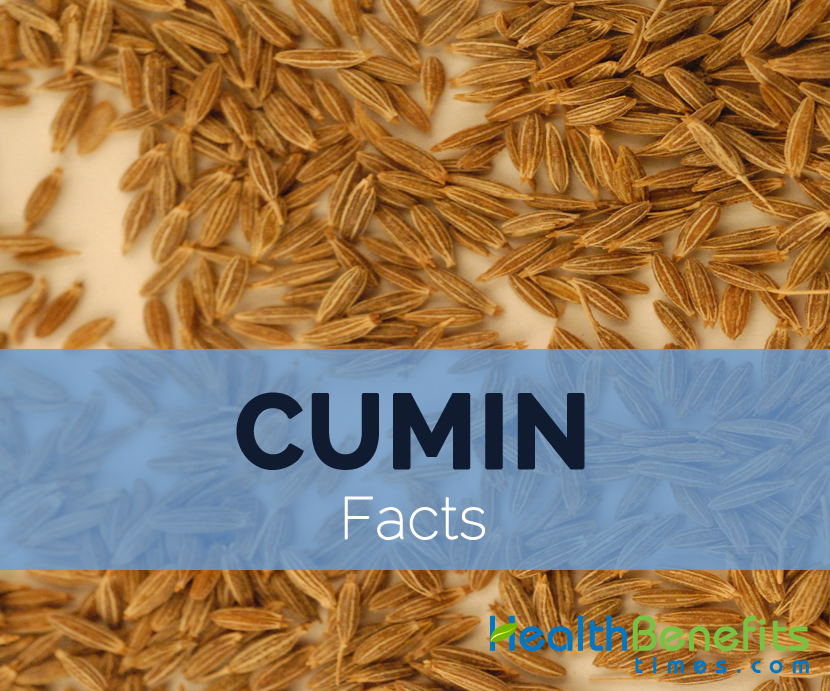 Cumin seeds are yellow to brown and oblong in shape. It is found in the form of powder and seed. It possess high amount of manganese and iron with fiber, vitamins and calcium. It is used as a spice in sauces, cuisines and curry mixes. India and USA produce the essential oils of cumin in the highest volume.
Cumin seeds are yellow to brown and oblong in shape. It is found in the form of powder and seed. It possess high amount of manganese and iron with fiber, vitamins and calcium. It is used as a spice in sauces, cuisines and curry mixes. India and USA produce the essential oils of cumin in the highest volume.
| Name | Cumin |
|---|---|
| Scientific Name | Cuminum cyminum L. |
| Native | East Mediterranean to India, The primary cultivation of cumin is in Europe, Asia, the Middle East, and North Africa with India and Iran as the largest cumin producers and exporters. |
| Common/English Name | Cumin, Cummin, Roman Caraway |
| Name in Other Languages | Arabic : Al-Kamuwn, Kamun; Brazil : Cominho; Bulgarian : Kimion, Kimion; Burmese : Ziya; Chinese : Ou Shi Luo, Ma Ch’in, Xian; Croatian : Kumin; Czech : Šabrej Kmínovitý, Římský Kmín; Danish : Kloeftsvoeb, Spidskommen; Dutch : Komijn; Eastonian: Vürtsköömen, Juustuköömen; Ethiopia : Kemun; Finnish : Juustokumina, Maustekumina; French : Cumin, Cumin Blanc; German : Kreuzkümmel, Weißer Kreuzkümmel; Greek : Kiminon, Kimino; Hebrew : Camon, Kammon; Hungarian : Egyiptomi, Kuminmag; Icelandic: Kummin, Ostakúmen; India :- Bengali : Jira, Guerati : Jiru, Hindu : Jeera, Ziira, Kannada : Jeerige, Malayalam : Jeerakam, Marathi : Jire, Punjabi : Jiira, Sanskrit : Jiraka, Jirna, , Tamil : Jirakam, Seeragam, Telugu : Jilakarra , Jiraka, Urdu : Jirah, Ziraa; Iran : Zirah, Zeera,; Italian : Comino, Cumino; Indonesia : Jintan Bodas , Jintan Putih,; Japanese : Kumin, Hime Unikyoo; Khmer : Ma Chin; Laotian : Thien Khaw; Malaysia : Jintan Putih; Nepalese: Jiiraa, Jira; Newari: Jii Norwegian : Spisskummen, Spisskarve; Pakistan : Zeera; Persian : Zireh, Zire Polish : Kmin, Kminek; Portuguese : Cominho; Russian: Kmin, Kmin Tminovyi; Sri Lanka: Duru, Suduru, Sinhala : Maduru; Slovašcina : Kumin, Laški Kumin; Slovenia : Rasca Rímska, Džíra,; Spanish : Comino Blanco, Comino; Swahili : Jamda, Kisibiti; Swedish : Pepparkummin, Spiskummin; Thai : Thian Khao, Yee Raa; Turkish : Kimyon; Ukrainian : Kmin, Кмин |
| Plant Growth Habit | An erect, slender herbaceous, subglabrous annual |
| Growing Climate | Mediterranean climate |
| Soil | Fertile and well-drained soil |
| Plant Size | 30–50 cm (12–20 inch) |
| Branchlets | Each branch of the plant possesses 2-3 sub branches |
| Stem | Grey or dark green in color |
| Leaf | Pinnate or bipinnate, length 5-10 cm (2-4 inches) , thread like leaflets |
| Flower | Small, white or pink flowers appear on the umbels; shape: oblong or ovate |
| Seed shape & size | Small, slender, oblong, curved |
| Seed color | Yellow to brown |
| Flavor/aroma | Distinct and strong flavor, warm aroma |
| Seed Taste | Coarse |
| Varieties/Types | White cumin seeds and Black cumin seeds |
| Season | Spring |
| Major Nutritions | Iron, Fe 3.98 mg (49.75%) Manganese, Mn 0.2 mg (8.70%) Copper, Cu 0.052 mg (5.78%) Calcium, Ca 56 mg (5.60%) Magnesium, Mg 22 mg (5.24%) Phosphorus, P 30 mg (4.29%) Total Fat (lipid) 1.34 g (3.83%) Vitamin B1 (Thiamin) 0.038 mg (3.17%) Zinc, Zn 0.29 mg (2.64%) Potassium, K 107 mg (2.28%) Protein 1.07 g (2.14%) Carbohydrate 2.65 g (2.04%) Vitamin B6 (Pyridoxine) 0.026 mg (2.00%) Vitamin B3 (Niacin) 0.275 mg (1.72%) Total dietary Fiber 0.6 g (1.58%) |
| Health Benefits |
|
| Calories in 1 tbsp (6 g.) | 22 Kcal. |
| Traditional uses |
|
| Precautions |
|
| How to Eat |
|
| Other Facts |
|

